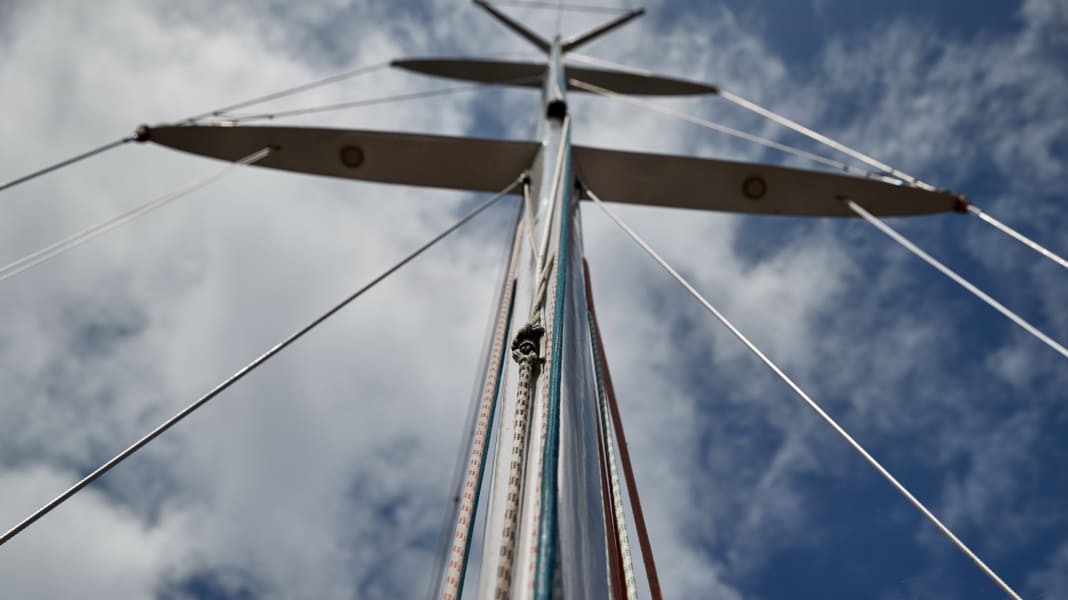
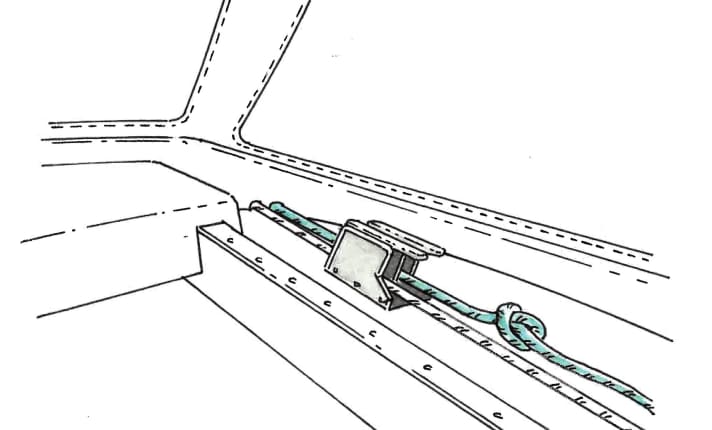
Rig lifehack 1:A knot for headaches and mainsail trim
The dirk is regularly trimmed, especially on smaller boats without a kicker. This is done in the harbour to keep the boom higher and thus clear of the crew's heads in the cockpit. This setting must be changed at the latest when setting the mainsail. The line is furled, otherwise the leech will be too loose and interfere with the sail profile. In our case, the dirk is deflected into the cockpit and is operated using a lever clamp. A knot protects against accidental slipping. If the line is not held properly or the cleat is accidentally opened, the boom would otherwise come from above. The knot is positioned precisely so that the boom is held in the lowest possible position. This minimises the risk of injury and eliminates the need for additional markings on the derrick: The clamp can be opened without hesitation and the boom is automatically in the correct position for setting the mainsail. A little trial and error is required to determine the ideal position for the knot. The tip may seem quite trivial, but it improves safety, simplifies everyday sailing and costs nothing.
Jochen Peschke, Hamburg
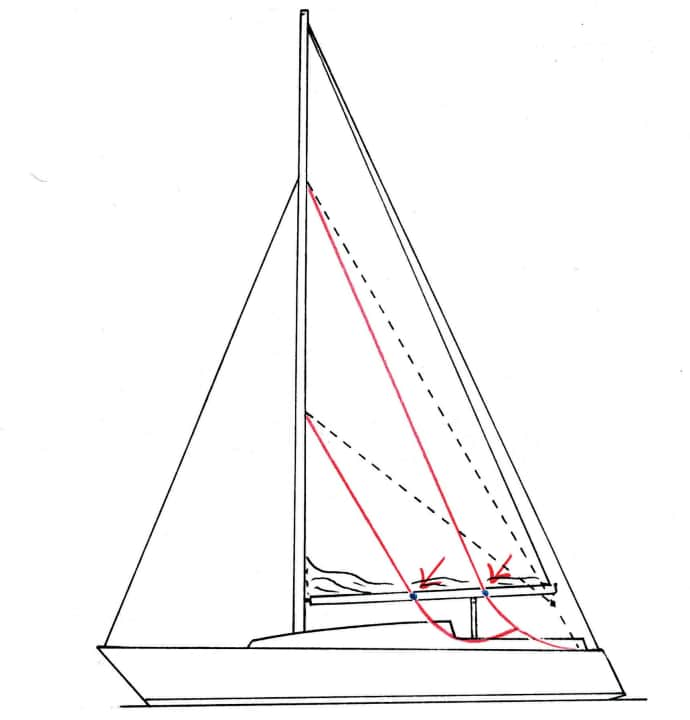
Rig lifehack 2:How to turn the backstage into a lazy-jack
There are no lazy jacks on our boat with upper and lower backstays. The trick: we have tied short loops to the backstays and attached small hooks to the main boom. During the recovery manoeuvre, we sail into the wind, then the boom is tied, the four backstays are lashed and the loops are hooked onto the main boom. These lazy jacks are tensioned by releasing the toggle, and the halyard can be rigged and the sheet tied between the backstays secured with pointers.
Prof Burkhart Bromm, Kiel
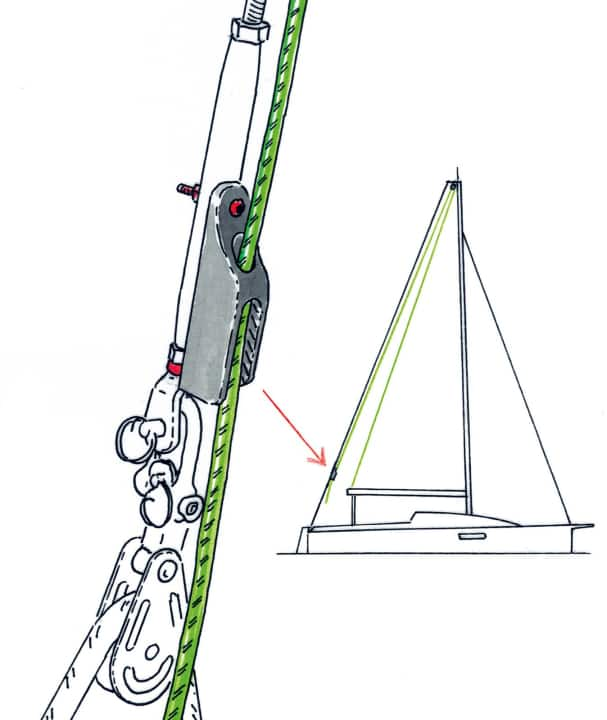
Rig lifehack 3:Dirk fitting on the backstay
On our small cruiser, not all halyards and outhauls are deflected aft. The end of the dirk was also tied to the mast. This meant that one person always had to be forwards when setting, hoisting and reefing the sail. The simple solution: a rope clamp was attached to the backstay, in which the halyard was fixed to the masthead. The clamp is attached to the backstay in two places: at the top with a screw through the hole in the shroud tensioner, which is used to regulate the backstay tension, and at the bottom with a cable tie.
Janosch Riepenhusen, Stade
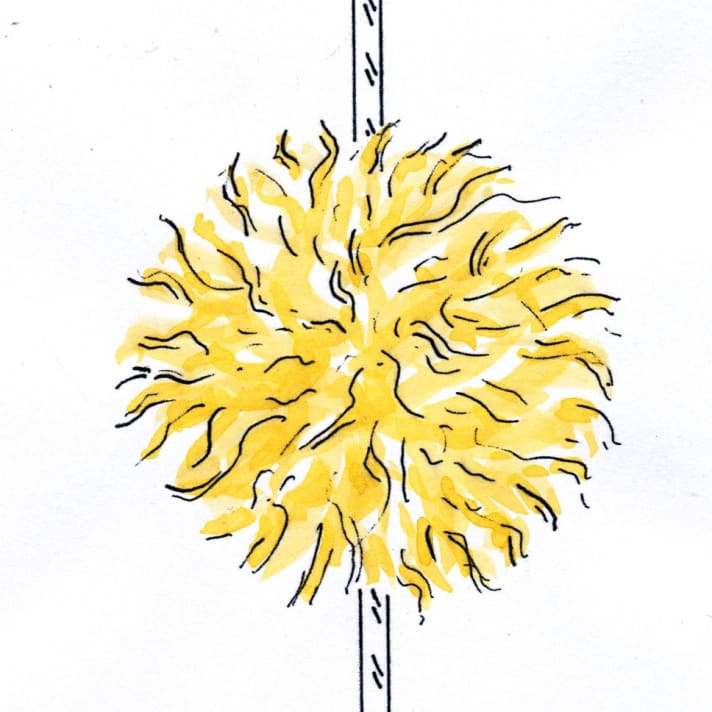
Rig lifehack 4:Calm in the rig thanks to Bommel
To counteract the humming of our Dyneema backstay, we simply made a bobble ourselves. Two cardboard discs with a diameter of six centimetres and a central hole measuring two centimetres each are slit and pushed onto the stay. Then wrap a thin line around both cardboard discs, always through the central hole on the outside. After five layers, one on top of the other, the coiled line is cut between the cardboard discs on the outside and secured with a constrictor knot.
Alexander Friedrich, Wismar
Do you have any advice for other sailors?
We will honour the publication of your lifehack with50 EURO.Please add photos or sketches. We also need your address and bank details
Submissions to: Editorial office YACHT, Quartier O, Paul-Dessau-Straße 8, 22761 Hamburg; or: mail@yacht.de
